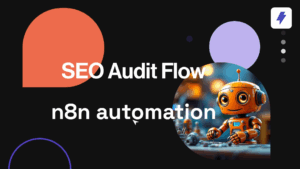Straico provides coins to users, which are deducted for each message sent. The deduction primarily depends on the number of words included in the prompt as well as the words generated in the response. This has raised concerns among both new and experienced users, as coins can sometimes be depleted unexpectedly.
This article serves as a comprehensive guide to clarify the coin deduction process and provides a comparison between the advantages and disadvantages of our two pricing models: Pricing Per Word and Pricing Per Message.
Table of Contents
ToggleWhat is Pricing Per Word?
When you send a prompt, you expect an LLM to respond accordingly. Your prompt (input) is initially “tokenized” as well as the response (output), and the number of tokens, which is tied to computational resources required to generate a response, determines the cost of each interaction.
As the number of tokens is related to the number of words in each interaction – or iteration -, when Pricing Per Word is active, Straico counts the number or words sent in the prompt and the number of words of the generated response to determine the cost of the interaction.
You can refer to the ‘Coins per 100 words’ column in the model selection dialog to view the fee for each LLM. Please note that the coin deduction considers both the input and output words.

However, you must be aware of coin usage, especially when having long conversations, i.e. sending several messages in the same chat. For every new prompt, coin deduction considers the number of words of the whole conversation, rather than the last interaction. This is because your prompts are context-aware, requiring all the previously generated conversation to create a new response. This means that coin usage will increase significantly for long conversations.
For instance, if you are utilizing Claude 3.7 Sonnet, which costs 5 coins per 100 words, and each iteration within the same conversation requires 200 words, the table below illustrates the coin usage for each iteration. As the conversation progresses, you can observe a significant increase in coin consumption.
| ITERATION | WORDS PER ITERATION | ACCUMULATED WORDS | COIN USAGE (PRICING PER WORD) |
| 1 | 200 | 200 | 10 |
| 2 | 200 | 400 | 20 |
| 3 | 200 | 600 | 30 |
| 4 | 200 | 800 | 40 |
| 5 | 200 | 1000 | 50 |
| 6 | 200 | 1200 | 60 |
NOTE: when Pricing Per Word is active, the number of words of attached files or websites are also included in the coin deduction.
What is Pricing Per Message?
When the Pricing Per Message option is active, the cost of each interaction is now scaled based on the number of words in the input and output but with an upper cap.
This means:
- Short messages incur a cost which is mainly proportional to the number of input/output words.
- Longer messages, which previously could lead to coin usage skyrocketing due to accumulated words across conversations, are now capped at a maximum price per message. This creates greater predictability and avoids dramatic increases in coin usage, even in long conversations.
You can view this fixed fee in the ‘Coins per message’ column when the Pricing Per Message option is enabled.

How to switch between Pricing Modes?
In your account this Pricing mode is active by default, but you can switch back and forth as you need following these simple steps.
Click the avatar in the top-right corner, and then select “User settings”.

Then, click on “Your preferences”.

Finally, find the ‘Pricing mode’ section, and check which mode is selected. You can choose between “Per Message”…

… and “Per Word”.

Make sure to click on “Save changes” at the end of the form.
You can check if pricing per message is active, looking at the coin usage indicator below the prompt space. If it’s orange, “Pricing per message” is active.

At any time, you can click the coin usage indicator to switch from pricing per message mode to pricing per word mode, and vice versa.

Comparing pricing modes
Which pricing mode is cheaper?
The Capped Pricing Per Message mode remains more economical in many scenarios, particularly in long conversations where accumulated words can result in significant coin usage under the Pricing Per Word model. For instance:
- In the Pricing Per Word model, each new message includes all previously accumulated words, leading to rapidly increasing coin usage as the conversation grows.
- With the adjusted Pricing Per Message model, this issue is mitigated. No matter how many words are accumulated in the conversation, the cost per message will never exceed its predetermined upper cap.
For example, if you’re using Claude 3.7 Sonnet, its pricing per 100 words (including input and output) is 5 coins, but when Pricing Per Message is active, you have to pay from 5 to 75 coins per message, How could you say that it’s cheaper to use Pricing Per Message?
The hidden truth is that, in Pricing Per Word mode, coin usage is calculated based on the entire history of the conversation. Consequently, as the conversation grows longer, coin usage will increase.
Again, imagine a scenario in which, for each prompt you send, you have 400 words adding up input and output. It means that, in the second iteration, you have accumulated 800 words, in the third iteration you have 1200 words, and so on. In the next plot, you will see the coin usage in each iteration, noticing that, if you use Pricing Per Word, coin usage will increase significantly after the third iteration.

Instead, if you activate Pricing Per Message, your coin usage will become constant for after the third iteration, regardless of conversation length. This becomes more economical than the Pricing Per Word mode after some messages.
Managing large files: which mode is better?
If you’re a long-time user, you might have noticed that dealing with large files is very expensive or even impossible due to LLM’s constraints. This is not an issue anymore with Pricing Per Message.
You can upload large files, which will be processed using RAG, as mentioned in a previous article. This allows users to interact with large files while incurring an affordable amount of coin usage.
If you want to save coins, activating Pricing Per Message when uploading large files is strongly recommended, otherwise you will run out of coins in no time!
For example, you can ask questions over websites like our previous article on Smart Merge.
In Pricing Per Words mode, the following prompt:
“How can smart merge be useful for Straico users?”
Returns the following response using Claude 3.7 Sonnet:
Smart Merge provides several advantages for Straico users:
- Streamlined AI Interactions: “Smart Merge empowers you to streamline their interactions with AI models, enhancing productivity and delivering superior results.” [https://straico.com/smart-merge/]
- Unified Response Management: With “intuitive drag-and-drop functionality, you can now unify responses, highlight key differences, or apply custom prompts to selected text.” [https://straico.com/get-started/]
- Improved Productivity: Smart Merge enhances “productivity when working with multiple AI responses simultaneously,” allowing users to compare and integrate outputs from different models efficiently. [https://straico.com/pricing-modes/]
- Efficiency: The tool is designed specifically to help users manage and integrate multiple AI responses, making it easier to extract the most valuable insights from different AI models within Straico’s unified workspace. [https://straico.com/pricing-modes/]
Smart Merge represents a significant enhancement to Straico’s platform, which already “simplifies AI integration, offering a unified workspace with leading generative AI models for text, images, and audio.” [https://straico.com/]
The cost of this interaction was 67.10 coins, and it will be even more if you ask further questions about the article.
Now, if you activate Pricing Per Message, the overall cost is 33.23 coins, and the response is the following:
Smart Merge offers several benefits for Straico users:
- Efficiency in comparing AI responses: You can easily integrate information from multiple AI models into a single coherent answer, saving time when evaluating different models’ outputs.
- Reduced redundancy: The “Unify Responses” option combines unique information from selected models while maintaining a logical flow, eliminating repetitive content.
- Insight into model differences: The “Highlight Differences” feature lets you quickly understand how various AI models approach the same prompt differently.
- Customization control: Using the “Custom Prompt” option, you can tailor how the merge happens according to your specific needs.
- Resource management: Smart Merge displays cost estimates upfront, helping you track expenses while using the feature.
- Seamless workflow integration: The merged response becomes part of your conversation context, allowing natural follow-up interactions.
This feature essentially helps users get the best possible AI responses by leveraging strengths from multiple models, making Straico a more powerful productivity tool for professionals working with generative AI.
Both responses have similar content, but the coin usage under Pricing Per Message mode was 50% cheaper!
“Cheaper” doesn’t always mean “better”
Undoubtedly, in terms of coin usage, Pricing Per Message is the most affordable choice.
But be wary: although Straico consistently supports context-aware conversations, each pricing model employs a distinct mechanism to ensure this functionality.
As previously explained, Pricing Per Word means that every input and output word in the entire conversation is taken into account when generating a new response.
On the other hand, when Pricing Per Message is active, we mostly use RAG-based strategies to make interactions cheaper. This is ok in most cases, but compared to what is done when Pricing Per Word is active, you might find some responses to be less accurate from time to time:
- Tracking long conversations: if the conversation becomes excessively long, when using Pricing Per Message, Straico will struggle to be aware of the first prompts and responses of the conversation. You might find some responses inaccurate if you ask for very specific details of the first iterations.
- Tracking conversation with lots of words: even if the number of iterations in a single conversation is not big, dealing with lots of words is more difficult for Straico under Pricing Per Message mode if you want specific details of previous iterations
- Asking for very detailed summaries: when Pricing Per Message is active, you can actually send a prompt requesting a very detailed summary of the previous iterations of the conversation. However, remember that RAG is better suited for answering very specific questions rather than providing summaries.
When utilizing the Pricing Per Message mode, keep the following tips in mind:
- Avoid very long and unrelated conversations. If you want to open a new topic, open a new chat.
- Be aware of prompts implying detailed summaries or details on very old prompts in the same conversation.
If you do really need to track very old conversations or need detailed summaries, consider activating Pricing Per Word.
Beware of capabilities
Remember that capabilities, such as Browsing, Image Generation and Image-to-video Generation have their own related coin usage fees regardless of the selected pricing mode.
Summary: which pricing mode is better?
Choosing between Pricing Per Word and Pricing Per Message highly depends on your own needs and constraints.
| Pricing Mode | ✅ Better for: | ❌ Not so good for: |
|---|---|---|
Pricing Per Word | Prompts requiring very specific details and summaries related to the previous messages or attached contexts. | Saving coins, especially if you have long conversations or large attached files. |
Pricing Per Message | Low coin usage, even for long conversations. Large attached files, when you don’t need very detailed summaries related to the files’ contents | Can miss some details when requiring multiple specific details or summaries. |


